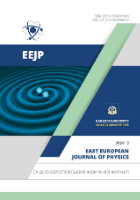
East European Journal of Physics
Scope & Guideline
Pioneering research for a global readership.
Introduction
Aims and Scopes
- Condensed Matter Physics:
Research focusing on the physical properties of condensed phases of matter, particularly the behavior and interactions of materials at the atomic and molecular levels. - Nanotechnology and Materials Science:
Investigations into the synthesis, characterization, and applications of nanostructured materials, emphasizing their unique properties and potential uses in technology. - Astrophysics and Cosmology:
Studies related to the physical properties and behaviors of celestial bodies, cosmic phenomena, and the fundamental laws governing the universe. - Plasma Physics and Magnetohydrodynamics (MHD):
Research involving the behavior of ionized gases (plasmas) and their dynamics in magnetic fields, with applications in fusion energy and astrophysical phenomena. - Thermal and Fluid Dynamics:
Research focusing on heat transfer, fluid mechanics, and the behavior of fluids under various conditions, including nanofluids and MHD flows. - Quantum Mechanics and Quantum Information:
Studies that delve into the principles of quantum theory, including quantum computing, entanglement, and quantum optics. - Semiconductor Physics and Device Engineering:
Research on the properties of semiconductor materials, including doping effects, electronic and optical properties, and applications in electronic devices. - Environmental and Medical Physics:
Investigations into the applications of physics in environmental science and medical technology, including radiation effects and dosimetry.
Trending and Emerging
- Nanomaterials and Nanotechnology:
There is a significant uptick in research focusing on the synthesis, properties, and applications of nanomaterials, driven by their unique characteristics and potential for innovation in various fields. - Quantum Computing and Quantum Information Science:
A rising trend in publications related to quantum computing reflects the growing interest and investment in this area, highlighting breakthroughs in quantum algorithms and information processing. - Biophysics and Biomedical Applications:
Research bridging physics and biology, particularly in the context of medical applications, has gained momentum, showcasing the importance of physics in understanding biological systems and developing medical technologies. - Advanced Energy Materials and Photovoltaics:
Emerging research focuses on the development of new materials for energy applications, particularly in solar energy conversion and storage, reflecting a global shift towards sustainable energy solutions. - Magnetohydrodynamics and Plasma Applications:
An increasing number of studies explore the applications of MHD and plasma physics in both astrophysical contexts and engineering solutions, such as fusion energy and advanced propulsion systems.
Declining or Waning
- Classical Mechanics and Traditional Dynamics:
There has been a noticeable decrease in papers focusing on classical mechanics, possibly due to the increasing complexity and interest in more advanced fields such as quantum mechanics and relativistic physics. - Nuclear Physics Studies:
Although still relevant, research specifically centered on nuclear physics has seen reduced attention, perhaps as researchers shift towards interdisciplinary studies that integrate nuclear applications with materials science and medical physics. - Optical Properties of Conventional Materials:
Research focusing on the optical properties of traditional materials seems to have lessened, with more emphasis now placed on novel nanomaterials and their unique optical characteristics. - Thermal Radiation Studies:
Research on thermal radiation in traditional contexts has declined, as newer methodologies and materials have emerged, leading to a focus on innovative thermal management solutions in nanotechnology.
Similar Journals

PHYSICA SCRIPTA
Pioneering Discoveries in Mathematical PhysicsPHYSICA SCRIPTA, established in 1970 and published by IOP Publishing Ltd, is a prestigious journal dedicated to the broad fields of physics, encompassing topics such as atomic and molecular physics, condensed matter physics, and mathematical physics. With an impressive commitment to advancing scientific knowledge, it holds a significant standing in the academic community, evidenced by its Q2 and Q3 rankings across various categories in 2023. The journal is instrumental for researchers, professionals, and students seeking to disseminate and engage with high-quality research, fostering collaboration and innovation within the field. Although it currently does not offer open access options, its robust editorial standards ensure the dissemination of impactful studies, contributing to its rising citation metrics. Published from the United Kingdom, PHYSICA SCRIPTA continues to be a vital resource for contemporary developments in physics, paving the way for future discoveries.
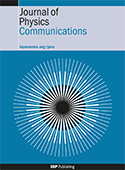
Journal of Physics Communications
Empowering Collaboration in the World of PhysicsJournal of Physics Communications, published by IOP Publishing Ltd, serves as a significant platform for the dissemination of innovative research in the realm of physics and astronomy. Since its inception in 2017, this Open Access journal has fostered a collaborative environment, allowing researchers, professionals, and students to share their findings and ideas without barriers. With an ISSN of 2399-6528, the journal has established its credibility in the academic community, achieving a ranking of Q3 in the 2023 category of Physics and Astronomy (miscellaneous), as well as a respectable position in Scopus with a rank of #122 out of 243 in its field. The journal's focus is on bridging theoretical concepts and practical applications, making it an essential resource for those engaged in the evolving landscape of physics. The Journal of Physics Communications not only aims to advance knowledge but also to inspire interdisciplinary collaboration, inviting contributions from diverse areas within physics. Authors and readers alike will find this journal particularly beneficial to stay updated on emerging trends and innovative research.

European Physical Journal Plus
Fostering Collaboration in Physics, Astronomy, and Chemical EngineeringThe European Physical Journal Plus, published by Springer Heidelberg, is a reputable open-access journal that serves as a vital platform for innovative research across various disciplines, including physics, astronomy, and chemical engineering. With an impressive impact factor reflected by its Q2 ranking in both Fluid Flow and Transfer Processes and Physics and Astronomy (Miscellaneous) categories, this journal plays a crucial role in disseminating high-quality research findings. Since its inception in 2011, it has fostered interdisciplinary collaboration and encourages the exploration of fundamental principles and applications. The journal also boasts a respectable Scopus rank, indicating its solid influence and reach within the scientific community. Researchers, professionals, and students alike will find the journal to be an essential resource for staying abreast of advancements and trends in these dynamic fields, while its open-access model ensures that valuable insights are accessible to a broader audience.
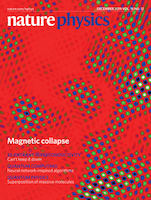
Nature Physics
Advancing Knowledge in the Heart of PhysicsNature Physics is a premier journal dedicated to publishing high-impact research in the realm of physics, brought to you by the esteemed NATURE PORTFOLIO. With its ISSN 1745-2473 and E-ISSN 1745-2481, this journal has established itself as a vital resource for the physics community, enjoying a remarkable Q1 quartile ranking in the Physics and Astronomy category for 2023 and securing an impressive Rank #5/243 and a 98th percentile ranking in Scopus. Since its inception in 2005, Nature Physics has become a catalyst for innovation, featuring cutting-edge research that encompasses a broad spectrum of physics disciplines. Although it operates under traditional subscription models, it maintains a commitment to accessibility through selective publications and editorial excellence. Positioned in Berlin, Germany, this journal is a must-read for researchers, professionals, and students who seek to stay at the forefront of advancements in physics.

PRAMANA-JOURNAL OF PHYSICS
Illuminating Discoveries in the World of PhysicsPRAMANA-JOURNAL OF PHYSICS, published by the esteemed Indian Academy of Sciences, serves as a pivotal platform for disseminating high-quality research in the field of Physics and Astronomy. Established in 1973, this journal aims to promote significant findings in various branches of physics, encapsulating both theoretical and experimental research. With a solid reputation reflected in its Q2 ranking in the Physics and Astronomy (miscellaneous) category and a commendable 94/243 rank in the Scopus database, PRAMANA stands at the forefront of the academic community. Researchers, professionals, and students benefit from its accessible compilation of innovative studies, contributing richly to the scholarly discourse. The journal, operating from its base in Bangalore, India, is committed to advancing knowledge through rigorous peer-reviewed articles, ensuring that all contributions hold merit in expanding our understanding of the physical world.
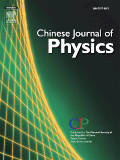
CHINESE JOURNAL OF PHYSICS
Fostering Collaboration Through Rigorous ResearchCHINESE JOURNAL OF PHYSICS is a distinguished publication in the field of physics, published by Elsevier. With its roots in Taiwan, this journal has been a vital platform for disseminating innovative research findings since its convergence in 1996, and it continues to thrive, with articles contributing to the advancement of physics and astronomy until 2024. The journal is recognized for its high quality, achieving a notable Q2 ranking in the Physics and Astronomy category, positioning it among the top 30 out of 243 journals in its field, reflecting an impressive 87th percentile ranking. Although it does not operate under an open access model, the journal offers valuable insights into the latest trends and developments in general physics and astronomy, making it an essential resource for researchers, professionals, and students dedicated to advancing their knowledge and understanding of these dynamic fields. With a commitment to rigorous peer review and a diverse range of articles, the CHINESE JOURNAL OF PHYSICS is instrumental in fostering collaboration and innovation within the global scientific community.

INDIAN JOURNAL OF PHYSICS
Championing Cutting-Edge Research in PhysicsINDIAN JOURNAL OF PHYSICS, published by the Indian Association for Cultivation of Science, serves as a pivotal platform for researchers and scholars in the field of physics and astronomy. With its ISSN 0973-1458 and E-ISSN 0974-9845, this journal is committed to presenting innovative research and developments across diverse topics in physics, covering both theoretical and experimental studies. The journal has made its mark in the academic community, evidenced by its classification in the Q3 category within the Physics and Astronomy domain as of 2023, and ranks #100 out of 243 in the Scopus curated database, placing it in the 59th percentile. Spanning from 2005 to 2024, the INDIAN JOURNAL OF PHYSICS aims to foster knowledge exchange and stimulate discussions among physicists and scientific enthusiasts. Whether you are a researcher looking to publish your findings, a professional seeking updates in your field, or a student eager to explore varying aspects of physics, this journal is an invaluable resource contributing significantly to the understanding and advancement of physics in India and beyond.

Results in Physics
Advancing Knowledge, Unleashing InnovationResults in Physics, an esteemed open-access journal published by ELSEVIER, has been a prominent platform for disseminating cutting-edge research in the field of physics since its establishment in 2011. With its ISSN 2211-3797 and E-ISSN 2211-3797, this journal proudly holds a Q2 ranking in the Physics and Astronomy category for 2023, showcasing its significance and quality within the scientific community. With a remarkable Scopus rank of #28 out of 243 in the general physics and astronomy domain, placing it within the 88th percentile, Results in Physics serves as a vital resource for researchers, professionals, and students alike, fostering a collaborative environment for the advancement of knowledge across various subfields. The journal aims to provide a rapid and unrestricted access to innovative findings, encouraging open scientific dialogue and enhancing the visibility of breakthrough research. Located in the Netherlands at RADARWEG 29, 1043 NX AMSTERDAM, Results in Physics continues to uphold its commitment to excellence and accessibility in the ever-evolving landscape of physics research.

Jurnal Fizik Malaysia
Empowering Researchers to Illuminate the World of Physics.Jurnal Fizik Malaysia is a prominent academic journal dedicated to advancing the field of physics, published by the esteemed Institut Fizik Malaysia. With an aim to foster knowledge dissemination and research collaboration among physicists, the journal serves as a vital platform for original research articles, reviews, and technical notes that cover various sub-disciplines of physics. Although the journal operates under a traditional subscription model, its commitment to quality has been bolstered by a rigorous peer-review process, ensuring high academic standards. Researchers and students in Malaysia and beyond are encouraged to engage with this journal, contributing to a deeper understanding of physical sciences and its applications. Moreover, with its ISSN 0128-0333, Jurnal Fizik Malaysia continues to play a significant role in the scientific community, enhancing visibility and accessibility for local and international research outputs in the ever-evolving landscape of physics.
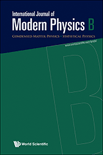
INTERNATIONAL JOURNAL OF MODERN PHYSICS B
Championing high-quality advancements in theoretical physics.The INTERNATIONAL JOURNAL OF MODERN PHYSICS B, published by WORLD SCIENTIFIC PUBL CO PTE LTD from Singapore, represents a pivotal platform for researchers in the fields of Condensed Matter Physics and Statistical and Nonlinear Physics. With a rich history spanning from 1996 to the present, the journal aims to foster cutting-edge research and innovative theoretical advancements, presenting high-quality peer-reviewed articles that address contemporary challenges in modern physics. Although it operates under a traditional access model, the journal maintains a notable impact, with a commendable ranking within the Scopus metrics – positioning it in the 63rd percentile for Statistical and Nonlinear Physics and the 53rd percentile for Condensed Matter Physics. The Q3 category ranking further underscores its relevance and growing stature in the scientific community. This journal is essential for physicists, researchers, and students seeking to keep abreast of the latest developments and theoretical insights in these dynamic areas of study.